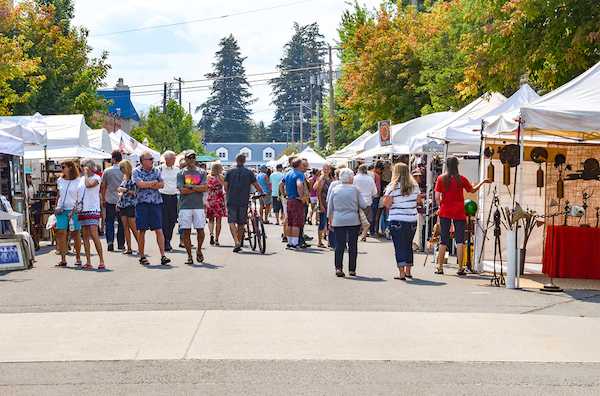The Healing Garden
- A gathering place to grieve and bring peace. By
- Sep 28, 2019
- 4 min read

When Lissa DeFreitas was 19 years old, her grandmother died. She was convinced, she said, that there was something beyond death.
It fascinated her then and has ever since: in her various volunteer roles in hospice care, as a social worker, as a spiritual care volunteer at Bonner General Health Community Hospice in Sandpoint, and now in her latest role there—as the volunteer and bereavement coordinator. She has held the post for six years.
“This is like a dream job,” DeFreitas said.
In her new role, she engaged in more conversations with the community, asking them what they needed. What kept coming up, she said, was a need for more opportunities to process grief. DeFreitas hosted workshops to help do so, specifically the loss of a child—sudden or otherwise. It was difficult, she found, because in group settings, she said, “pain reverberated” for those who had lost a child.
So she continued to look for other ways to help families process their grief, and that’s when she came back to the Healing Garden at the hospital.
Late this summer, the hospital held a dedication for a new sculpture in the Healing Garden: a metal-art tree, created and donated by artist and hospice volunteer Betty Gardner. Each heart-shaped copper leaf on the tree memorializes a name of a child, with the child’s name and date of birth.
Gardner was there for the August 30 dedication ceremony, both as the artist and also as someone with names on the tree. Of the 23 children with names on the tree, she was related to four of them, she said.
“It was one of the most touching (times) showing my art anywhere I’d ever been,” Gardner said. “I watched people, looking at the tree, talking about it, sharing their stories, sharing their tears. … To think that something I create evokes such strong emotion is what every artist hopes for. I was honored and it was very, very special and moving to me.” Gardner said she understands what the families are grieving. She, herself, lost her brother, two years her junior, when she was 20.
“It changed us all forever, and I’m so grateful today that we understand that people need support when they’re grieving,” Gardner said. “Coming together and sharing our stories makes us feel less isolated, that you’re not the only person that this devastating thing has happened.”
The statue is placed next to a large fort that looks like a hollow tree stump, under the shade of other trees that line the path of the children’s section in the Healing Garden. There is also a chapel nearby. There is room for more leaves, Gardner said, which can be moved around the various branches.
At the feet of the tree are various flowers, which are the addition of Kristina Orton, who DeFreitas credited as “the visionary of this whole project.” Orton lost a son, DeFreitas said.
The Healing Garden has long existed at Bonner General, as a place where people can go to acknowledge their loved ones who have died, while also having the opportunity to plant flowers or otherwise work in the dirt. It is just one aspect, though, of how the hospice team is helping grieving parents and families.
Through a group called Bereaved Parents of the USA, the Coeur d’Alene Chapter publishes a monthly newsletter that contains various resources, including contact information for various local groups that meet regularly.
DeFreitas and volunteers also host an annual Kids’ Camp for children ages 8 to 17 who have had a loss through death, be it a friend, sibling, grandparent, parent or someone else. The camp is held near Clark Fork and offers children a chance to process their grief, DeFreitas said, free of other distractions.
“They’re creating opportunities to remember that person and ways that they can walk through it, deal with their emotions, but also experience the joy that person was for them in their life,” DeFreitas said.
Led by adult volunteers, children at the camp do art projects, go on hikes and play games as they learn to trust one another, DeFreitas said, while also holding a memorial ceremony to the people who have died and taking other steps to process their grief.
“One of the things that I see for children is they take the experience at the camp and they bring it home,” she said, “and a lot of parents have said their child wouldn’t even mention the death until kids camp, and then they came home and they could not stop talking about their experience.”
One of the driving principles behind the statue and the garden is that it is helpful to acknowledge the loss, DeFreitas said, but that can be difficult when the loss came by suicide or drug overdose. And so, some families decide it is better not to talk about it. But that can impact people—especially children—for life, DeFreitas said. She hopes, then, that the tree can be a gathering place for families to process together, in conversation or in silence.
“We know in nature that we have times when the leaves all fall off, and we have times when the leaves begin to blossom,” DeFreitas said, “but there’s a place where (parents can say) I can go and see that child is still in my heart, and I’m remembering them, and other people can remember them, and we’re celebrating them. It’s a combination of acknowledging, celebrating, remembering, honoring. It is that whole experience.”













Comments